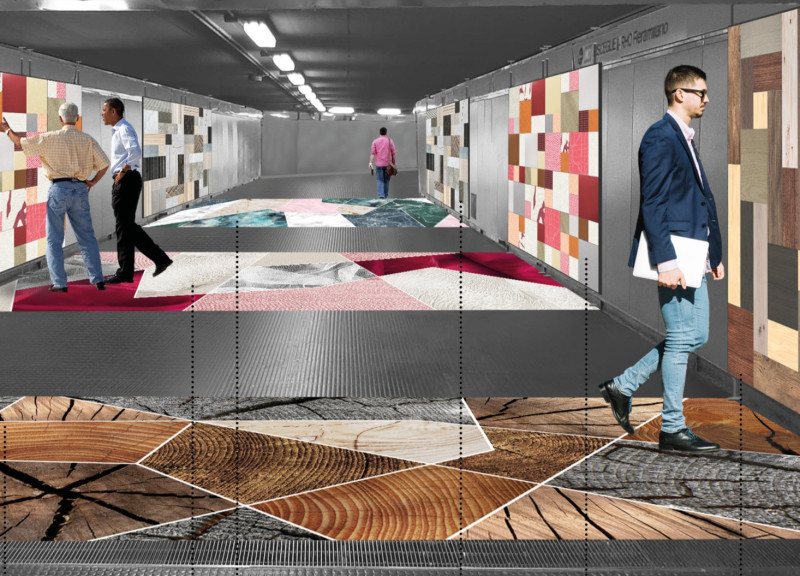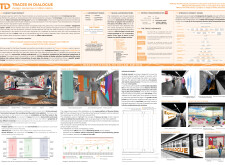5 key facts about this project
## Project Overview
"Traces in Dialogue" is an architectural initiative situated within the Milan Metro system, developed in partnership with Federlegnoarredo. The project aims to enhance the passenger experience by creating a more engaging and interactive environment in transit spaces. By exploring the relationship between users and the metro infrastructure, the design seeks to cultivate a dialogue that bridges technology and human activity, ultimately transforming the way individuals experience public transit stations.
### Spatial Interventions
The project incorporates a range of spatial interventions that prioritize usability and visual engagement. Key design elements include modular panels that adapt to the vertical surfaces of the metro walls, contributing to both acoustic management and aesthetic vibrancy. Interactive features are integrated throughout the installations, encouraging user participation and fostering a dynamic relationship between commuters and their surroundings. The concept of "Siluets in Dialogue" further enhances this engagement, using visual stimuli to connect passengers with their environment based on their movements within the space.
## Material Selection
Materiality plays a crucial role in achieving both aesthetic appeal and functional performance. Innovative materials have been selected to create an immersive experience for commuters. Adhesive PVC is employed for its flexibility and versatility, while wood is used to introduce warmth and a sense of familiarity to the urban setting. Additionally, sound-absorbing panels help mitigate noise, enhancing acoustic comfort during travel. The incorporation of modular panels not only supports the interactive character of the installations but also aligns with the overall design narrative, allowing for a cohesive and adaptive environment across the transit system.



















































